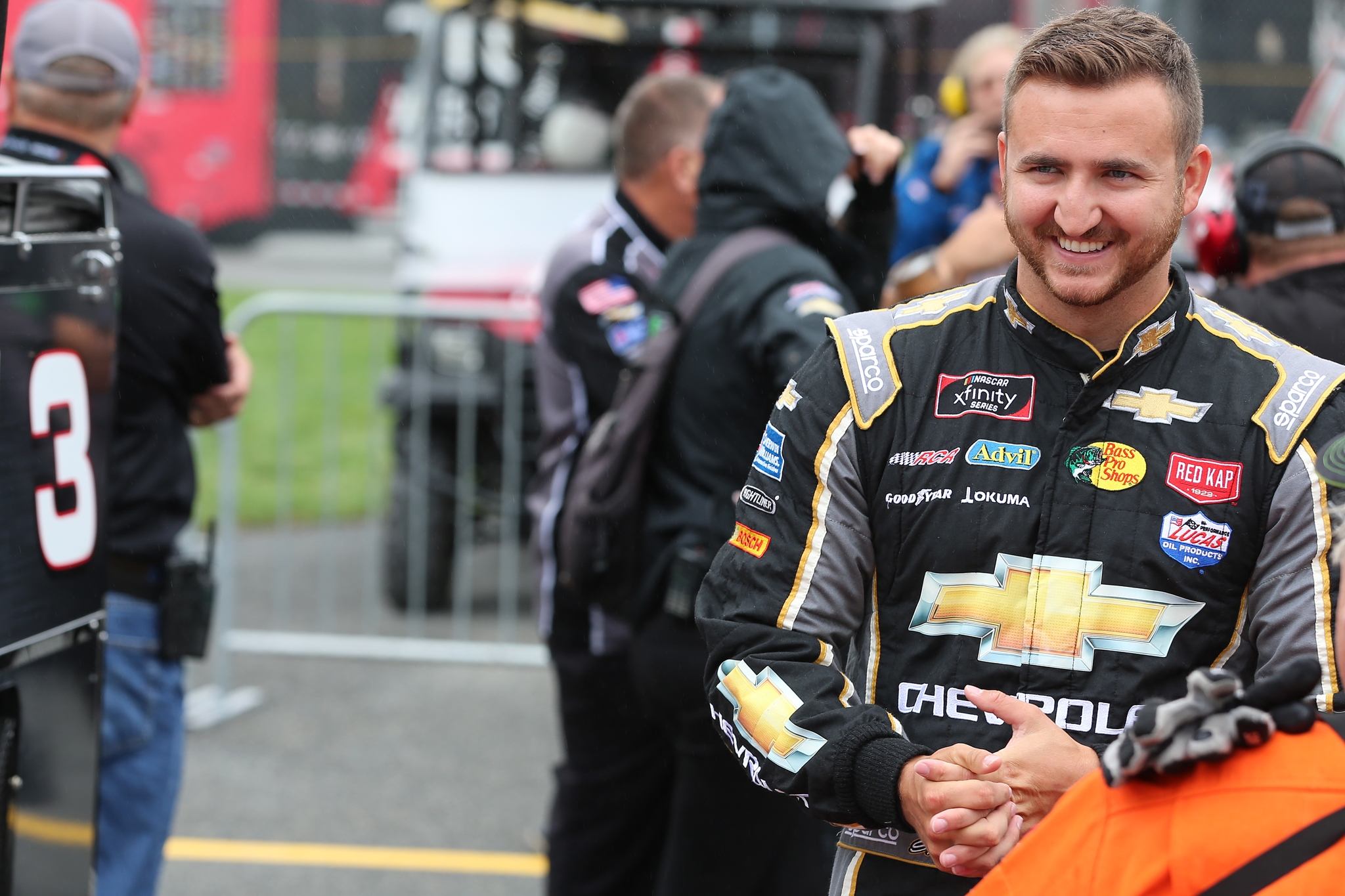Each month, we’ll shine the spotlight on a different NASM Certified Personal Trainer who’s making a difference in their community.
For December, we spoke with Shane Lee, a race car driver who was recently certified as an NASM personal trainer. Here’s what Shane had to say about life in the fit lane.
Shane, tell our readers a little bit about yourself
My name is Shane Lee. I am 26 years old, and I live outside of Charlotte, North Carolina. I was recently married in April of 2019. My wife and I are expecting our first child in January of 2020. I am pursuing careers in NASCAR, as well as the fitness industry. I also love golfing, hunting, and other outdoor hobbies.
How did you get into racing? What drew you to the sport?
I started racing go-karts when I was seven years old. It was a sport my dad got me involved in in my youth. From there, I climbed up the ladder, from late models to ARCA and Xfinity. Racing has always been a family affair with my parents, sisters, and wife, all of whom actively keep up in attending my races.
For our readers who don’t know, can you tell us the difference between Late Models, ARCA and NASCAR?
Late Models are a stepping stone to racing on asphalt. Most of the time, these cars are driver-owned, and you race locally, or in surrounding states. All of these races are on short tracks.
ARCA is The Automobile Racing Club of America. It’s a developmental series higher up the ladder than late models. It’s the equivalent of, say, college football compared to the NFL. Bigger tracks, faster speeds. ARCA presents a driver’s first chance at live pit stops. ARCA gives drivers an opportunity to run ten races on NASCAR-sanctioned bigger tracks like Daytona, Talladega, and other tracks.
NASCAR stands for The National Association for Stock Car Auto Racing. The big leagues of racing. They sanction over 100 tracks in 48 states as well as in Canada, Mexico, and Europe. Their races are broadcast internationally in over 150 countries.
Have you had any close calls or brushes with fate you’d care to share?
One of the hardest wrecks I had was probably in Las Vegas, with a head-on hit into one turn and then getting T-boned by my teammate. It left a pretty decent size bruise on my arm. But overall NASCAR has done a great job with the safety innovations they bring to the racecars.
Wow. That is amazing you only walked away with a bruise from that accident!
So how did you get into fitness?
My first time working out was in high school when I was around 16. Friends recruited me into working out. I was also inspired by the movie "Never Back Down." Ever since then, I have been hooked on fitness and working out to stay in the best shape I can. When I started working out, I was about 6 feet tall, weighing 140 pounds with zero muscle mass. I've worked hard to build muscle ever since.
How does staying in shape help with racing?
Racing is a very physically demanding sport that most people don’t understand. The drivers race for multiple hours at temperatures that can reach close to 150 degrees inside the cars, and there’s a tremendous amount of water weight that drivers drop during the race. There is a lot of stress on the body from G-forces. Your core muscle and neck muscles take the brunt of this load. Staying in shape helps you through those circumstances, and stay focused on the track.
What made you decide to get certified as a NASM-CPT?
I signed on to drive for a new NASCAR team with a new owner. When the deal came together, everything went smoothly, but as the season went on, the owner started getting in over his head, and the race team ended up shutting down in mid-August.
I sat down with my wife, and she asked me what I was going to do next. Even though I have an engineering degree, I told her I had more of an interest in becoming a fitness professional. My goal is to work at a gym for a year or two and learn more about the aspects of personal training. After that, I want to start my gym and get more specializations through NASM.
I chose NASM really because I follow them on Instagram, and when I Googled “best personal training certifications to receive,” NASM was always at the top.
Do you have any words of wisdom for our trainers? Or for anyone thinking about getting into racing?
It's 95 percent marketing. If you can market yourself well enough to get sponsors, it will help you to have a long-sustained career in either industry. I believe the NASM-CPT is an excellent certification to learn. Even if I never personal train a single client, just the aspects I have learned from NASM has helped me tremendously in my training. The scientific research you learn through NASM, and knowing the way the body works, would be suitable for anybody to learn.
All of us at NASM/AFAA hope Shane’s success in fitness and racing stays on track. Thank you so much for answering our questions, Shane!
You can follow Shane on:
- Instagram - instagram.com/ShaneLeeRacing
- Facebook - facebook.com/ShaneLeeRacing
- Twitter – twitter.com/ShaneLeeRacing
* * *
Do you know someone who might be worthy of a Q&A with a CPT? Tell us about him/her by emailing meiti.prang@nasm.org.

















